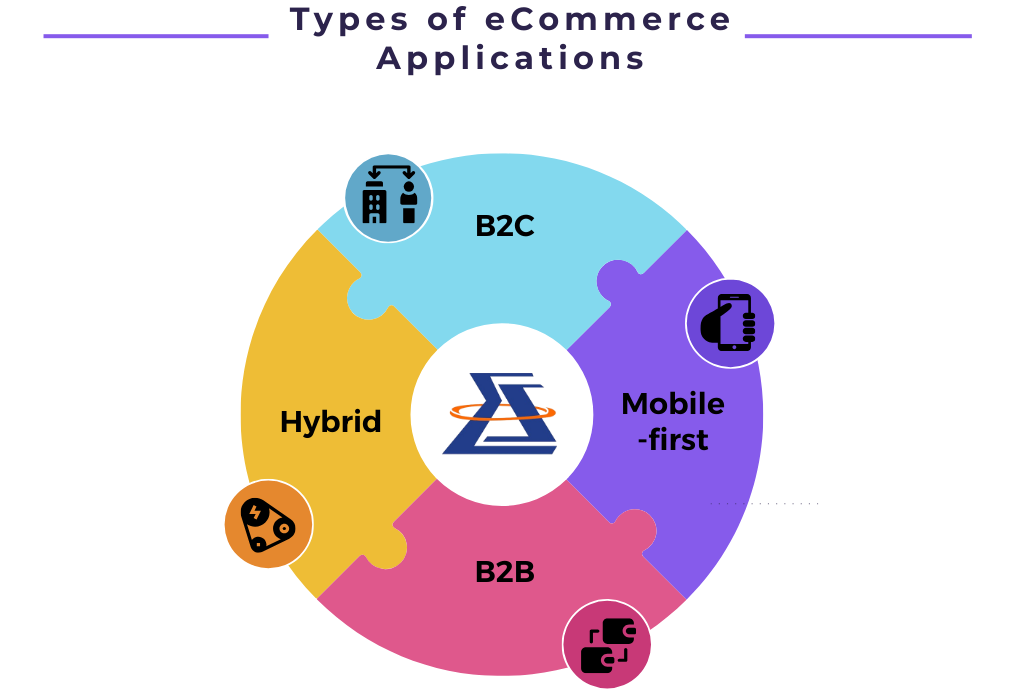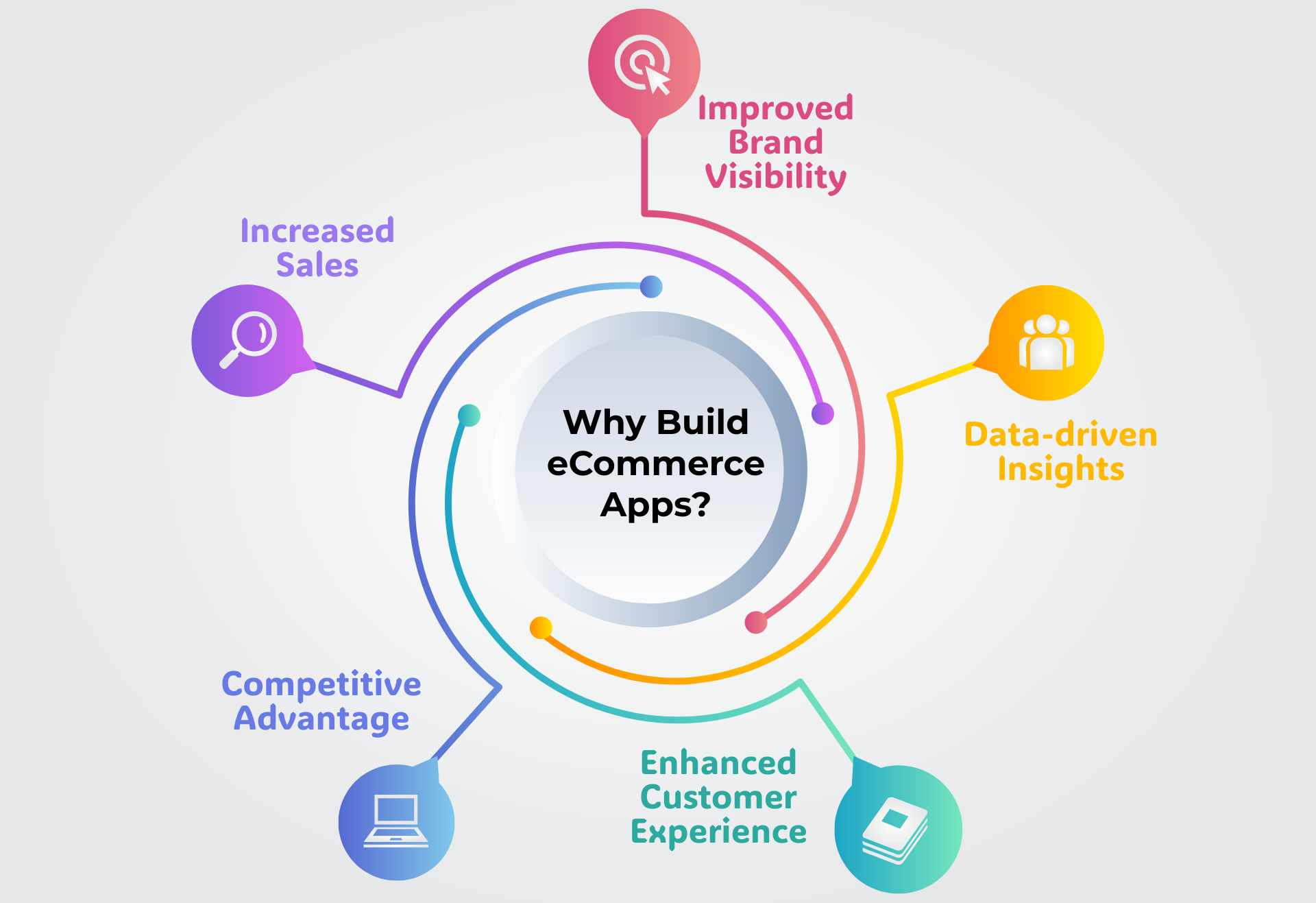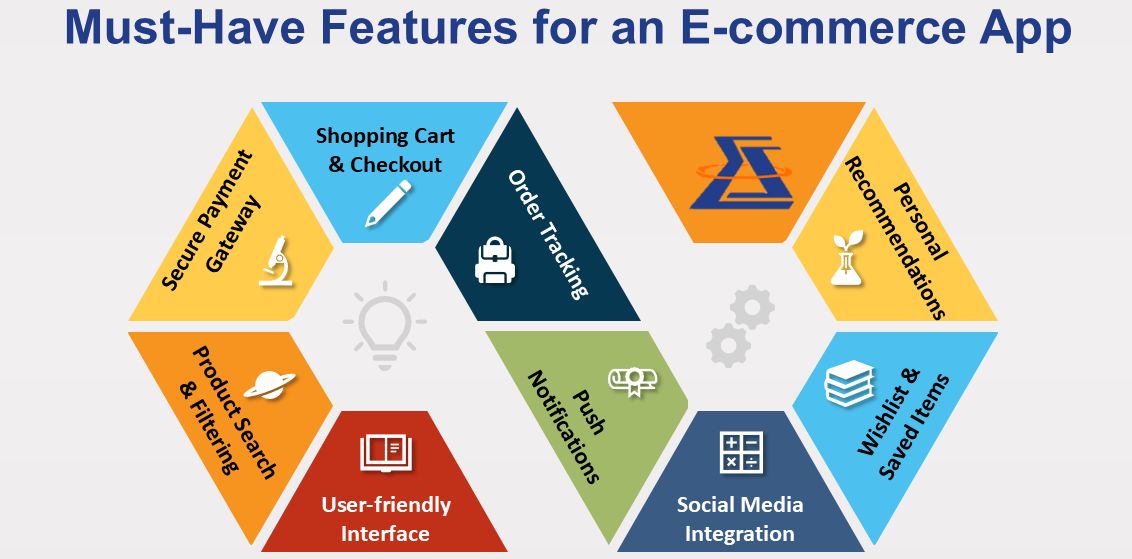views
Introduction
Despite the immediate post-covid year being discouraging, mobile eCommerce has come flying colors in the last quarter of 2023, with an impressive growth of 15% in in-app purchases (IAP). The continuous growth momentum in the first quarter of 2024 suggests that mobile eCommerce has been on an upward trajectory with 21% growth. eCommerce mobile app development, therefore, has been the fastest-growing trend in 2024, and the market is anticipating a similar surge in 2025 as well.
With eCommerce app development on the rise, eCommerce businesses are redefining how we shop. What was once an analog landscape is moving to a totally new digital one. Mobile devices are no longer an alien’s pleasure. Consumers have been regularly using their smartphones to buy clothes, groceries, and other household products, as well as luxury items.
Among many consumer trends, the eCommerce app trend has found broader acceptance among consumers across the globe. Therefore, eCommerce app development has become imperative for businesses worldwide. For businesses, eCommerce mobile apps have become the easiest way to make consumers aware of their products and sell them quickly. These apps have brought a different kind of business efficiency for companies.

Thesis Statement
So read this comprehensive eCommerce app development guide that will help you know what to do to be able to develop a successful eCommerce app. We’ll cover every ordeal of the process—prepping, launch, and further.
We want to share with you what we have learned in creating eCommerce apps and actually guide you through the challenges until you can deal with the complexities yourself. This eCommerce app development guide will act as your roadmap as either a business owner or developer.
Synopsis
This article will feature how and what of eCommerce app types, advantages of having an eCommerce app, features you should include in your eCommerce app, various eCommerce mobile app development processes and challenges, cost that is incurred in developing an eCommerce app, and trends. By the end of this eBook, you’ll know what it takes to create an eCommerce app that would cut through the competition.
eCommerce Apps: A Quick Overview
Definition
An eCommerce mobile app leverages the wide web world or internet to sell a wide range of products and services to consumers. In that respect, it offers product display, safe payment, and order check-up services to enhance the shopping experience.

Examples
Amazon: Its e-commerce giant app features a huge product selection, one-click purchasing, and personalized recommendations. Its easy-to-use interface and incorporation of Amazon Prime has revolutionized the face of the market and enhanced the new face of eCommerce app development.
eBay: eBay’s application integrates the elements of auction-oriented listings and regular, fixed-price offers targeting both private and commercial users. Airbnb offers distinct selling attributes, such as in-app bidding coupled with seller ratings, with the maximum range of product categories. Therefore, it will be an early bird of the peer-to-peer selling eCommerce business model.
Etsy: The Etsy app establishes a connection between its unique, handcrafted, and vintage products with factories made around the world. What makes this so successful is that it’s niche user-friendly, and the stories about the products and sellers are quintessentially featured.
Shopify: This is mainly an application that businesses can use to create online stores. However, it also comes equipped with tools that enable merchants to manage the stores from their mobile devices. This eCommerce Application Development example demonstrates why it is possible to develop an eCommerce application to meet both sellers’ and buyers’ needs for tracking inventory, orders, and analytics.
Benefits of eCommerce App Development
Enhanced User Engagement: eCommerce apps offer a smooth and personalized shopping experience and keep users engaged, as well as entice them to repeat interaction with your brand.
Increased Sales: Ecommerce apps generally have push notifications and easy checkout processes, which can dramatically improve conversion rates as well as overall sales volume.
Better Customer Retention: Loyalty programs with personalized offers all the way to convenient reordering features in apps can work towards customer loyalty and retention.
Improved Brand Visibility: A well-designed app becomes a constant brand touchpoint, thus increasing visibility and recall amongst the users from their app stores.
Data-Driven Insights: Data from eCommerce apps provides businesses with what kind of behavior, preference, and pattern of purchasing their users make, which becomes valuable data, helping to make them informed decisions about their business.
Competitive Advantage: As you step into eCommerce app marketing, a robust eCommerce app can easily differentiate you from competitors who are leaving everything to their eCommerce sites.
Types of eCommerce Applications

B2C (Business-to-Consumer)
B2C eCommerce apps deal with direct selling of products to consumers. Interface and checkout processes are designed so that they are user-friendly; personalization in providing recommendations and reduction of the buying process enhancements are their priorities.
B2B (Business-to-Business)
B2B eCommerce apps run on business-to-business technology. Some of them have bulk ordering capacity, custom pricing, along with account management tools. Apps focused on long-term relationship building and an efficient procurement process.
Hybrid
A hybrid eCommerce app development process combines B2C and B2B models in one app. They can be flexible, catering to both individual consumer and business clients, and also have a nice versatility that can be used by companies with varying base customers.
Mobile-first vs. Desktop-first
The mobile-first approach puts the design of your app for the smartphone as its main focus, taking into account touch interfaces and more for smartphones. With desktop first, we can design web experiences that are mobile-forward without making the optimal sacrifices on the path to mobile optimization.
Why Build an eCommerce App?

Increased Sales
With eCommerce apps, sales can be up to 40% higher than mobile websites. Instead, they rely on eCommerce app features specific to mobile, like push notifications and one-click purchasing, to drive up conversions and raise the average order value.
Enhanced Customer Experience
An eCommerce app that’s properly developed provides an incredibly smooth shopping experience with neat navigation, tailored recommendations, and hassle-free checkout systems. It makes customers satisfied and also makes repeat purchases.
Improved Brand Visibility
An eCommerce app puts your brand in front of millions of users only through an app. This will also provide you with the opportunity to optimize your mobile app store and run targeted mobile campaigns.
Data-driven Insights
Data from your eCommerce apps is extremely important in terms of knowing about user behavior, preference, which product is purchased more, and such. It allows businesses to make decisions to enhance product offerings, marketing strategies, and app improvements.
Competitive Advantage
Today, having a robust eCommerce app makes one business stand out from the rest. It shows innovation and customer convenience and should be able to draw customers away from competitors without a mobile offering.
Must-Have Features for an eCommerce App

User-friendly Interface
User retention depends on having a clean, intuitive interface. Easy navigation, thorough product categorization, and a visually pleasing eCommerce app design that is in line with your brand’s identity should be a part of it.
Product Search and Filtering
Product discoverability requires efficient search and efficient filtering options. And making your search algorithms as robust as possible by adding category filters and sorting options that allow the users to find products quickly and easily.
Secure Payment Gateway
The trust must be built on a reliable and secure payment system. Make sure you can process the multi-payment option and also be complying with industry-standard security protocol, just to keep the user’s financial information safe.
Shopping Cart and Checkout
Conversion is dependent on a smooth checkout process. Add eCommerce app features such as guest checkout, saved payment info, and order summaries to simplify the purchasing process, thereby helping reduce cart abandonment.
Order Tracking
Real-time order tracking increases customer satisfaction by opening up transparency. Build a system to help users track your orders from the moment they were purchased to when they were delivered, thereby reducing the number of lost customer service queries.
Push Notifications
User engagement using push notifications is a powerful tool. Then, use them to send personalized offers, order updates, and reminders, or remind your customers, drive app opens, and encourage repeat purchases.
Social Media Integration
Engagement and reach could be increased with social media feature integration. Providing social shopping users to share products, give reviews, and have the opportunity to login with their social accounts.
Wishlists and Saved Items
A wishlist makes future purchases all the more likely. You can make use of it to save items for future use and perform targeted marketing to increase your conversions.
Personalized Recommendations
Using that browsing and purchase history, you can implement AI-driven, personalized product recommendations. This feature makes the shopping experience better, and much more importantly, it can greatly elevate the average order value.
How to Build an eCommerce App
Define Your App’s Goals
Decide what your app needs to do, who it is for, and what is important. With this foundation, your eCommerce app development process will graduate and ensure that your team is on the same page.
Choose a Development Platform
Businesses need to decide if they want to go for Native app development or if they are up for hybrid or cross-platform. The first determinant is budget. Businesses need to consider the time the developers will consume to build an app. Each framework has its own benefits and challenges. Along with speed to market, eCommerce app development cost, performance, and maintenance costs should be considered before selecting the right platform.
Design the User Interface (UI)
Get your eCommerce app design to look intuitive and visually appealing while outwardly showcasing your brand. Be mindful of the usability principle; you want smooth navigation and some consistent look on different screens and devices.
Develop the App’s Features
Use appropriate languages and frameworks to build your app’s core functionalities. Make sure that the product listings, shopping cart, and payment integration are features you prioritize before moving on to advanced capabilities.
Test and Quality Assurance
Unless you have sent your app to market, it should be tested to the nth degree on as many devices as possible and in as many use scenarios as possible. It covers functional testing, usability testing, and performance testing to result in high value to the user.
Launch and Marketing
Launching your eCommerce app should be in line with eCommerce app development trends, ASO should be conducted, awareness for a few weeks before the launch of the app, and necessary post-launch marketing strategies to encourage users to download the app.
Key Challenges of eCommerce App Development
Security Concerns
Focus on probable threats such as leakage of an organization’s information and possible cases of electronic payment scams. The user data should be safeguarded by using sound encryption methods; safe authentications and security checks should be conducted periodically.
Performance Optimization
Make sure that your app is running smoothly across different devices and different network connectivity. Minimize the page loading time, implement fast data processing, and think about the offline mode for a better experience.
User Experience
It may not be easy to design a positive and enjoyable interaction with the user. Convenience, simplicity, and easy-understand design of the pages, presenting the product in the most convenient way possible, making users content.
Integration with Existing Systems
That’s why integrating your app with inventory management, CRM, or payment systems can become challenging. Think in advance about how data will flow through your app, and if you will integrate it with the existing business structure, it is better to look through the possibilities of APIs.
Scalability
You should also always design your app with future expansion possibilities. Build a system with the ability to scale up to more users, products, services, and features while maintaining high performance and a good user experience.
Factors to Consider When Building an eCommerce App
Budget
Think about the costs that are incurred while creating eCommerce apps, the costs associated with maintaining the application, and the costs incurred for popularizing the application. Take into consideration probable ROI before starting the development and ranking the functions according to the required budget to achieve effective eCommerce Mobile App Development.
Timeline
Consider conditions that you must take into account in the development schedule, such as application intricacy and the number of developers. Ensure that you have set achievable objectives that are fine-tuned to the project and that you may want to adopt a flexible development paradigm such as the agile model.
Maintenance and Updates
A post-launch plan on how the app will be maintained and updated for bugs or new eCommerce app features. To reduce churn risk, plan for resources that will enable you to provide updates for the app as often as possible because of getting better and meeting the user needs in the market.
Team Expertise
A responsible development team should always have the appropriate skills and experience. In case of a lack of necessary specialists, it is advisable to either hire them or work with a reliable eCommerce app development company.
eCommerce App Development Cost
Factors Affecting Cost
Both in terms of development and total eCommerce app development cost, application complexity, various eCommerce app features, design quality, and the adopted development approach determine the final cost. Platform selection and integration may also define budget planning factors, such as whether the app will be developed for iOS only, Android, or both.
Source: https://www.sigmasolve.com/blog/ecommerce-app-development/






















Comments
0 comment